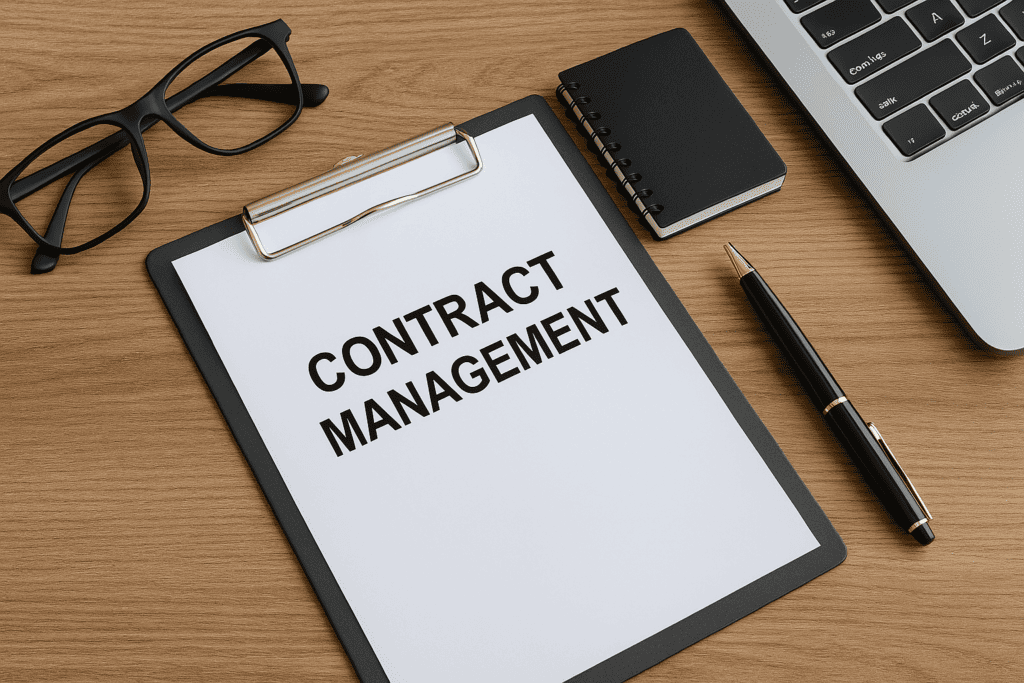
Negotiating contracts can seem daunting, but with a clear approach, it becomes manageable. Whether you’re finalizing a business deal or establishing a new partnership, following these steps can lead to successful outcomes for all parties involved.
Before entering negotiations, gather all relevant information:
Before jumping into any negotiation, it’s crucial to come prepared. This means collecting and reviewing any past agreements, understanding the current deal’s context, and being clear on what you’re working with—such as timelines, budgets, and expectations.
Taking time to do your homework helps you spot any potential issues early on. For example, if a clause caused problems in a previous contract, you’ll know to address it upfront. Solid preparation gives you the confidence to negotiate from a position of strength.
Define what you aim to achieve:
Going into a negotiation without clear goals is like setting sail without a map. Decide what your must-haves are, are pricing terms, timelines, deliverables, or legal protections. Also, know what you’re flexible on.
When you understand your priorities and limits, you avoid wasting time going back and forth unnecessarily. You’ll also have a much smoother experience when both parties know what they want from the start and can work toward a middle ground.
Good communication is the backbone of any negotiation. Make sure you’re not just talking but also listening. Pay attention to what the other side values or is concerned about. This creates space for trust and mutual understanding.
Try to avoid overly complex language or legal jargon unless necessary. The clearer your communication, the fewer misunderstandings there will be later. Open, respectful dialogue often leads to creative solutions that satisfy both sides.
Work together to draft the contract:
Once everyone is on the same page about the terms, it’s time to start putting things into writing. Both sides should be actively involved in this step to make sure the final document accurately reflects what’s been discussed.
Working together on the draft helps catch mistakes and ensures that there are no surprises later on. This is also your chance to clarify the wording and double-check that all points are fair and balanced.
Once all terms are agreed upon:
Now that the contract has been carefully reviewed and agreed upon, it’s time to sign and make it official. But don’t rush this step. Give the contract one final read-through to make sure everything is accurate and that no important details have been missed.
Once signed, the contract becomes a binding agreement. It’s a good idea to store it in an accessible, organized location so it’s easy to refer back to if needed. Having a reliable signing and storage process can save a lot of hassle down the road.
After execution:
Contract management doesn’t stop after signing. You need to actively monitor the agreement to ensure that all parties are meeting their responsibilities. This includes tracking key dates, deliverables, and any renewal or review periods. Keeping a close eye on contract performance helps avoid disputes and ensures your organization is getting the value it expects. Regular check-ins can also highlight when changes are needed, helping you stay proactive instead of reactive.
-Shubham Kapoor
(Senior Associate, Emerge Legal)
This website has been designed only for the purposes of dissemination of basic information on Emerge Legal; information which is otherwise available on the internet, various public platforms and social media. Careful attention has been given to ensure that the information provided herein is accurate and up-to-date. However, Emerge Legal is not responsible for any reliance that a reader places on such information and shall not be liable for any loss or damage caused due to any inaccuracy in or exclusion of any information, or its interpretation thereof. Reader is advised to confirm the veracity of the same from independent and expert sources.
This website is not an attempt to advertise or solicit clients, and does not seek to create or invite any lawyer-client relationship. The links provided on this website are to facilitate access to basic information on Emerge Legal, and, to share the various thought leadership initiatives undertaken by it. The content herein or on such links should not be construed as a legal reference or legal advice. Readers are advised not to act on any information contained herein or on the links and should refer to legal counsels and experts in their respective jurisdictions for further information and to determine its impact.
Emerge Legal advises against the use of the communication platform provided on this website for exchange of any confidential, business or politically sensitive information. User is requested to use his or her judgment and exchange of any such information shall be solely at the user’s risk.
Emerge Legal uses cookies on its website to improve its usability. This helps us in providing a good user experience and to also help in improving our website. By continuing to use our website without changing your privacy settings, you agree to use our cookies.